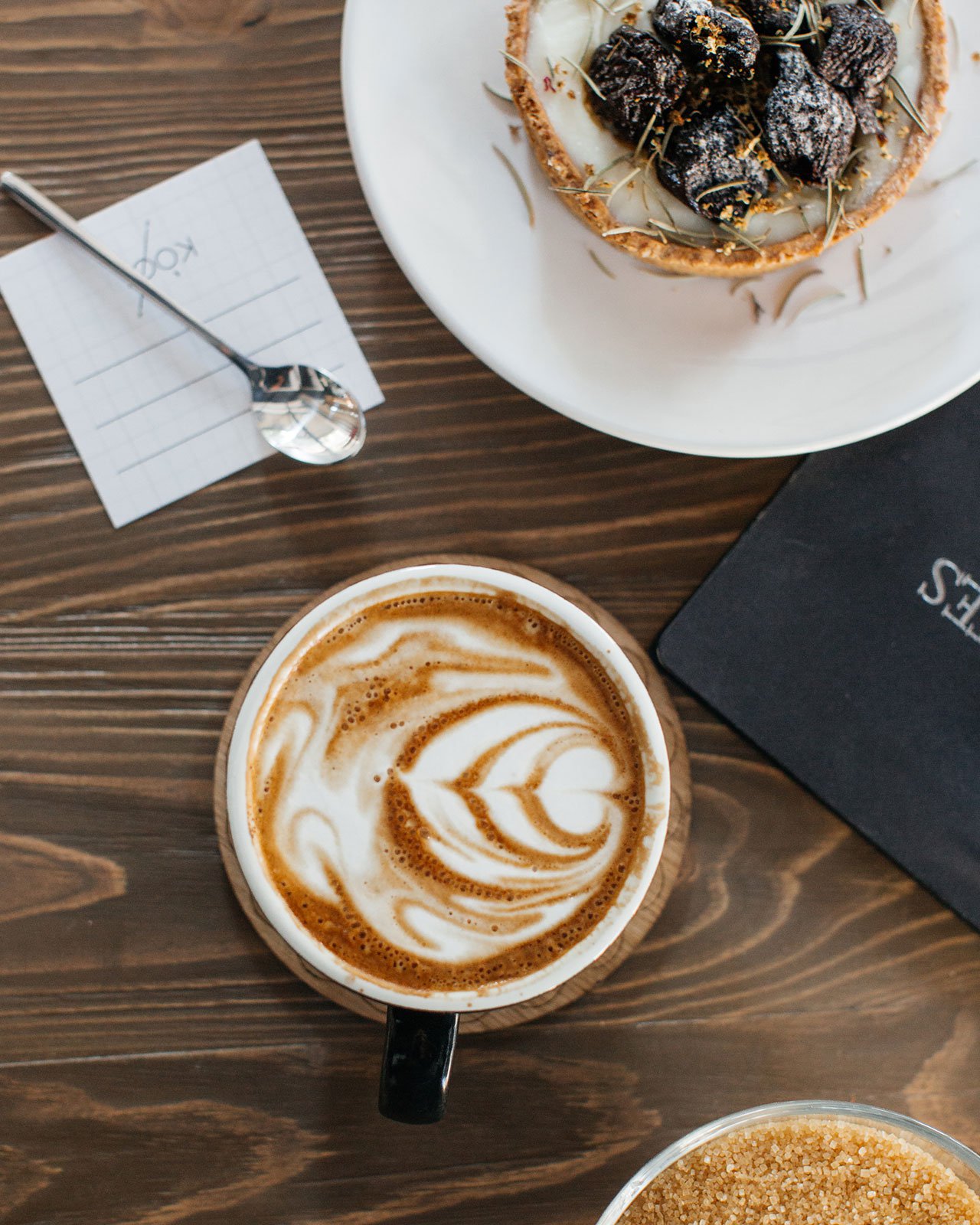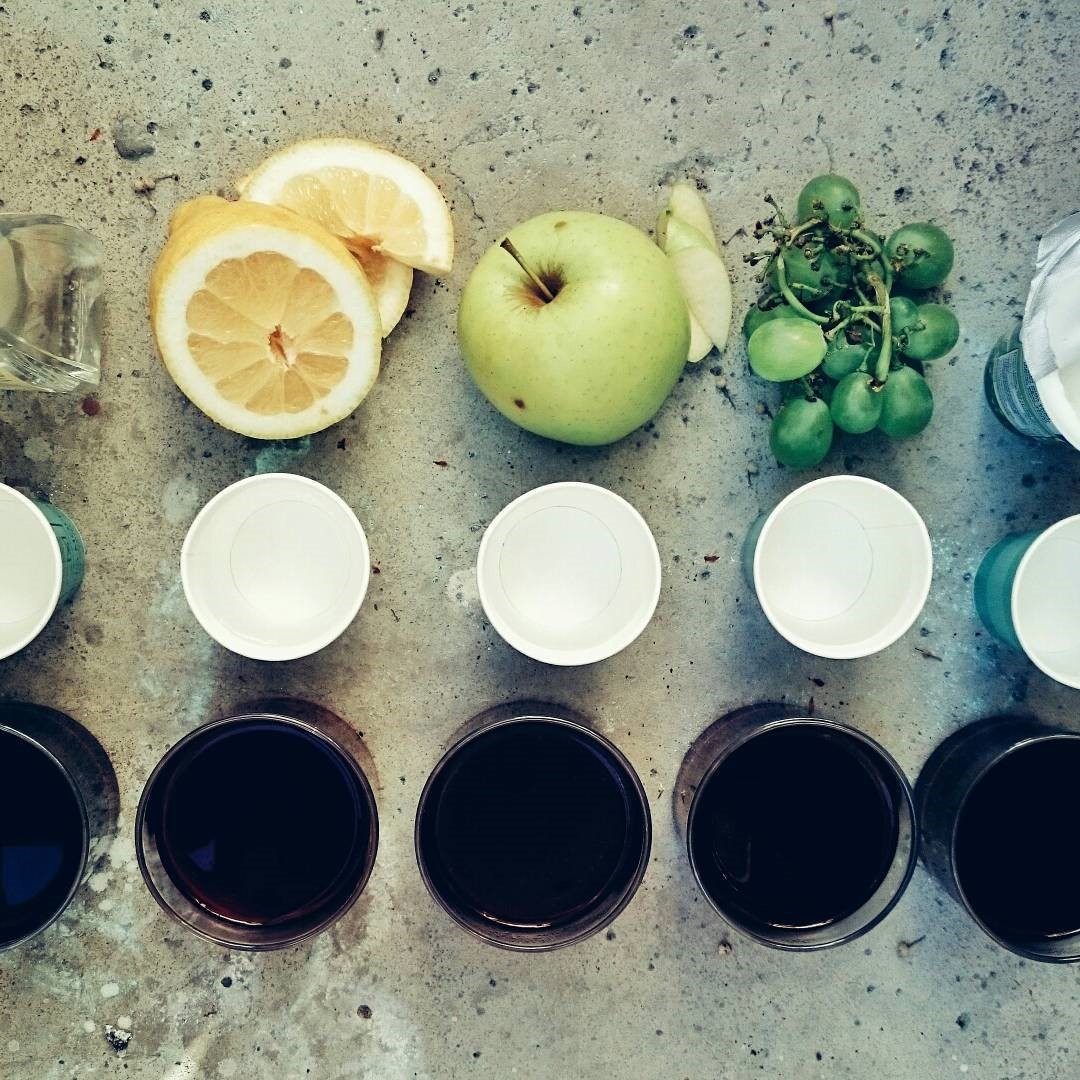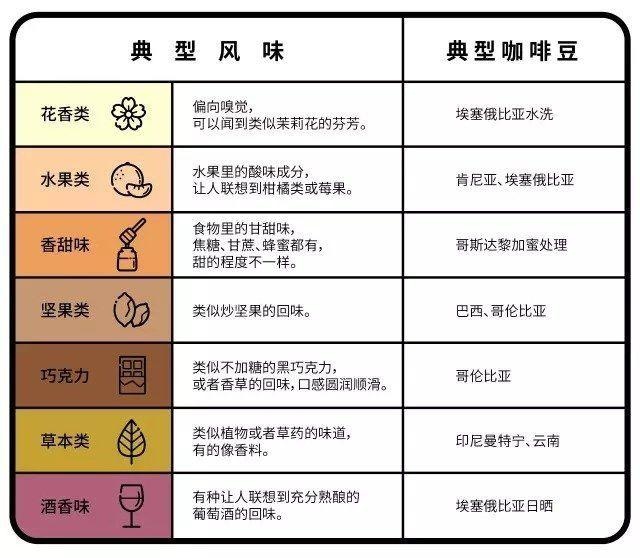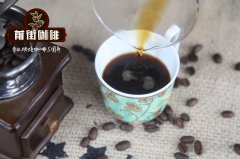SCA barista training, a little abnormal intermediate barista examination questions, the coefficient of difficulty is high!
Professional coffee knowledge exchange more coffee bean information please follow the coffee workshop (Wechat official account cafe_style)
Today's article, I would like to share with you some of the exam questions I sorted out on the Internet, the difficulty is in the intermediate barista, the content is a bit long, so divided into the upper and lower episodes ~ ~ I hope you can read it carefully ~ !

1. The female barista posture is correct ( D ).
A. Legs crossed B. Lower your head and play with your mobile phone
C. Hands on hips D. Stand straight
Small series interpretation: send sub-questions.
2. How do you respond when a customer calls you a waiter? ( B )
A. White eyes B. Friendly and generous response
C. Pretending not to hear. D. It doesn't matter. Just respond.
I'm a barista, and I'm also a waiter. No matter what you call me, I pride myself on providing customer satisfaction at work.
3. Among the following options, the one that does not belong to the posture category is ( B ).
A. Makeup B. Perfume C. Walking posture D. Standing posture
The barista is not allowed to spray perfume at work, which will affect the barista's sensory judgment.
4. When coffee shops recommend drinks to guests ( C ).
A. Tell the guest loudly B. Whisper in the guest's ear
C. Keep standing, smile and speak clearly D. Show the guest with your fingers
The clerk can recommend you the most suitable coffee according to the taste characteristics of your own coffee. For example, coffee with milk or hand-brewed coffee without milk, drink a little stronger, or taste a little sour, so on.

5. The Chinese expression of "latter" should be (B).
A, coffee B, milk
C, milk coffee D, chocolate
Editor's interpretation: if you order a latte in China, the Chinese barista will default that you make a coffee latte. If you are in Italy, Spain and other countries, you ask for another latte and the barista will definitely bring you a glass of milk.
Latte is milk, not coffee, such as matcha latte, black tea latte, these lattes do not contain a drop of coffee.
"Latte" is the transliteration of Italian "milk". What we usually call "latte" is actually the abbreviation of "Caffee Latte".
6. "one shot espresso" means (A).
A, one concentrated B, two concentrated
C, small cup concentration D, full cup concentration
Editor's interpretation: one shot = one, Double shot = two espresso, Espresso: espresso.
7. "Ristretto" means (A).
A, 1:1 Espresso B, 1:2 Espresso
C, 1:3 Espresso D, 2 times Espresso
Xiaobian interpretation: in-depth understanding of Espresso (espresso), in fact, there are many "brothers", including: Ristretto, Lungo, Doppio, simply put, Ristretto is 1:1 Espresso,Lungo is twice the Espresso,Doppio in Italian is the double meaning of "double", is the meaning of double espresso, that is, we often say "double espresso".

8. If you receive complaints from regular customers that Brazilian coffee tastes bad, which is wrong? (a)
A, avoid mentioning B, redo
C, recommend drinking other D, analyze the cause
Editor's interpretation: first of all, we need to know whether the Brazilian flavor is wrong, or whether the guests do not accept the Brazilian flavor. The barista first analyzes the causes and can make a new cup to verify it. If it is found that it does not match the taste that the guests like, then recommend drinking other beans.
9. "Flat White" means (C).
A, latte B, mocha C, Australia white D, cappuccino
Editor's interpretation: Australian-style white coffee, Australian white because it is smoother and consistent with the cup noodles, and highlights the delicate milk foam above, the temperature is also more mild, hence the name Flat White. Latte and Flat White in addition to the different ratio of milk to coffee, Flat White is generally 2 shot, depending on the thickness of the milk foam. At the entrance of the latte, you will feel a thick layer of milk foam above 1cm, which makes the taste more soft.
And Flat White although there are some bubbles, but more delicate, soaked in the 5mm below, milk and espresso fusion is very high, the taste is more silky.
10. (C) is a traditional coffee roasting equipment, rotating furnace wall through direct contact with the heating source to heat the coffee gradually, the general roasting time is 10-15 minutes.
A, fluid bed B, convection heating
C, conductive heating D, semi-hot air type
Xiaobian interpretation: the core component of the bean roaster [baking bucket], if it is direct fire type is conductive heating, fluid bed type is flame heating air, so that hot air through the converter, coffee is more evenly heated, generally baking time takes 10-15 minutes.

11. Coffee made from a mixture of two kinds of coffee beans is called (B).
A, item B, matching
C, multi-product D, instant solution
Xiaobian interpretation: Italian blending is the selection of two or more coffee beans from different producing areas, mixed together according to a certain proportion, in order to create a diversified flavor that coffee beans in a single producing area can not show.
12. Most of the blue mountain coffee beans are stored in (D).
A, high density sealing cans B, tin foil bags
C, gunny bag D, wooden bucket
Interpretation by editor: Jamaica Blue Mountain is the last country where Liu Xiaojing still uses traditional wooden barrels to transport coffee.
13. Usually, the shelf life of cooked coffee beans with good packaging is (D).
A, 5 years B, 3 years C, 2 years D, 1 year
Editor's interpretation of "shelf life"
The shelf life of prepackaged food refers to the safe edible period of the product, which is provided by the producer and marked on the product for limited time.
Distinguish between shelf life and taste period, the roasting date of coffee beans represents freshness, usually 2-3 days roasted beans can be called fresh coffee beans. From the experience of the baker, the taste period of coffee beans is about 15 days (specifically look at the baking degree), that is, after the bean cultivation period, 7-20 days from the baking date is regarded as the flavor period, that is, the taste period.
14. (√) when storing raw beans, high temperature and humidity can easily lead to mildew of raw coffee beans.
15. (√) 4. Is soot, smoke, medicine and wine the technical terms for coffee flavor?
16. "thick thickness" is a cup term for evaluating the taste of coffee. That is, it refers to the thickness of coffee taste in the mouth and (B) sex and so on.
A, acid B, persistent C, bitter D, alkali
17. Drinking too much coffee can cause (C).
A, dyspepsia B, fat increase C, palpitation D, calcium deficiency
18. The Japanese like to drink (A) coffee.
A, rich taste B, fruit C, light D, milk flavor
19. Compared to Arabica coffee beans, Robosta coffee beans have a taste bias (A).
A, bitter B, sweet C, sour D, spicy
20. Long-term moderate consumption of coffee (D).
A, will cause myocardial infarction B, will cause myocardial thickening
C, can reduce heart rate D, can be refreshed, relieve fatigue
21. The characteristics of coffee beans grown in Yunnan, China are (B).
A, strawberry B, herbal flavor
C, nutty D, honey
Editor's interpretation: African coffee is generally characterized by strong aroma and charming acidity, and its sour taste is lively and exciting, but the mellow of African coffee is often a little thin.
Central and South American bean flavor: generally speaking, the flavor is more balanced, showing more nuts, chocolate flavor, alcohol thickness is also good.
Asian beans and island flavor: mellow thickness is higher than Central and South American beans and African beans, but the sour taste is lower, the flavor is slightly sunken wood, herbs, spices and soil, and the low stuffy aroma is higher than the rising sour flavor. Island beans are relatively light and gentle, with a light and elegant tone.
Yunnan belongs to Asian beans.
twenty-two。 Coffee beans in China (D) have a relatively strong sour taste.
A, Fujian B, Hainan C, Taiwan D, Yunnan
23. Of the following options, (B) will shorten the service life of the ice maker.
A. the ice maker is always open and B, and shut down at the end of daily business.
C, continuous water supply at work, D, ice machine cleaning once a year
24. When making coffee in a siphon pot, the following description is incorrect.
Dry the pot with a dry cloth before you can fire and boil water
B. when stirring with a stick, be careful that the stick does not touch the filter cloth
C. Wipe the lower pot with a wet cloth and cool the lower pot so that the coffee liquid quickly falls back to the lower pot.
D. after the production, shake the pot back and forth or left and right slightly before you can pull it out carefully
Editor's interpretation: wipe the next pot with a dry cloth, cool the next pot, so that the coffee liquid quickly falls back to the next pot, and the wet cloth wipes the glass easily.
11. With regard to the working principle of coffee bean grinder, the following statement is correct (C).
A. when working, the cone mill has a large contact area with coffee beans, and the aroma is lost quickly.
B. the contact area between the parallel mill and the coffee bean is small, and the aroma is lost slowly.
C, the cone mill has the advantages of short grinding time and fast heat dissipation when working.
D. parallel mill has the advantages of long grinding time and fast heat dissipation when working.
Xiaobian interpretation: flat knife friction will produce heat-so that coffee has a charred and bitter taste. Especially when you grind the coffee beans very fine and let the flat knife grinder work for a long time, the taste will be more obvious.
Cone knife friction produces heat-the aroma and grease of coffee can be well preserved because the coffee powder is not heated during grinding.

twelve。 The main method of screening and grading of Ethiopian coffee beans is (B).
A, grading B according to particle size, grading according to defective bean proportion
C, D by hardness, D by weight.
Editor's interpretation: the screening and grading method of Ethiopian coffee beans is classified according to the proportion of defective beans, usually G1, G2, G3.
13. The Vietnamese habit of drinking coffee is to add (A) flavor after baking.
A, spice B, petal C, cheese D, medicinal materials
14. Raw coffee beans should be kept dry and out of light during the (A) process.
A, storage and transportation B, processing C, picking D, production

16. Among the following options, the most important ingredient that causes coffee beans to change color during roasting is (B).
A, moisture B, sugar C, tannic acid D, caffeine
The Chinese name of 17.Espresso macchiato is (C).
A, Macedonian Coffee B, MacArthur Coffee C, Machiato D, Machiavelli Coffee
Editor's interpretation: sending sub-questions
18. With regard to the traditional dry processing of raw coffee beans, the following statement is correct.
A. dry the picked berries directly, remove the pulp and dry the picked berries.
C. the picked berries will be fermented and dried, and the picked berries will be washed and dried.
Editor's interpretation: traditional dry processing = Solar treatment, English dry process,natural
There is no need to use any water resources, what is needed is manpower and time. First of all, the coffee fruit should be picked by hand and screened by a sieve to make sure each one is ripe. Then they will be put into the bean drying farm to dry. This stage can last nearly four weeks, during which the coffee fruits must be turned from time to time so that each fruit can be exposed to the sun evenly in all directions. Finally, the fruit is sent to the machine, the dried flesh is peeled off and the raw beans are taken out. Tanning is a long process.

19. Venice monopolized imported coffee from Europe for almost a hundred years and later spread to ports such as (C).
A, Marseilles, London and Amsterdam B, Marseilles, Rome and Amsterdam
C, Milan, London and Amsterdam D, Marseilles, London and Vienna
The editor interprets: the first stop of coffee is Ethiopia in Africa, the second stop is Yemen, the third stop is India, the fourth stop is Java, the fifth stop is France, the sixth stop of coffee is the North American continent, the North American continent has brought a magical turning point for coffee. Coffee from Essex Haral to the Yemeni port of Moka, and from 1500 to 1554, Islamists tried to transplant coffee to Syria and Turkey, but failed because of soil, water and climate.
Around 1600, the Indian Babudan stole seven Yemeni coffee seeds and returned to Karnataka province in southwestern India to breed successfully. In 1700, to Amsterdam, in the early 17th century, the Germans, French, Italians and Dutch competed to sell coffee to their overseas colonies.
20. Coffee mocha does not include (C).
A, milk foam B, chocolate sauce C, syrup D, milk
21. Traditional cappuccino coffee, coffee, milk, foam ratio is (D).
A 、 1:2:2 B 、 1:2:1
C 、 1:1:2 D 、 1:3:1
twenty-two。 The town of Kafa, where the coffee originated, is located in (B).
A, Yemen B, Ethiopia C, Turkey D, Port of Mocha
Send score questions
23. In the coffee making utensils, the suitable choice of very fine powder is (B).
A, siphon pot B, Turkish pot C, French kettle D, mocha pot
Editor's interpretation: medium and fine powder ≈ white granulated sugar (the most common white granulated sugar in the supermarket, a little bigger than that). Generally, the hand punching will eventually be fixed on the thickness of the medium and fine powder. Because the medium and fine powder is very commonly used, you who love coffee should try your own coffee mill and find the most suitable level of medium and fine powder.
Very fine powder ≈ close to salt
Ultra-fine powder is only used when making espresso. Grinding also requires a professional coffee mill to achieve extremely fine. If you use a mocha pot to make coffee, it is also more suitable to use very fine powder, but the extraction is generally excessive, although a little oil can come out, but the taste is bitter, and the enjoyment process is often greater than the taste itself. The Turkish pot is also made of very fine powder.

24. When installing a semi-automatic coffee machine, part (C) of the water treatment system should be installed at the front end.
A, water softener B, filter C, water purifier D, water heater
25. With regard to the cleaning and maintenance of coffee grinders, the following statement is wrong (B).
A. Empty the bean warehouse.
B. If there are residual beans that cannot be removed from the soybean warehouse, it should be covered and left for the next business use.
C. Clean the bean warehouse.
D. Remove the beans and powder from the surface of the grinding piece.
twenty-six。 In order to avoid scale in the boiler and pipe of the coffee machine, (B) should be installed.
A, water heater B, water softener C, water purifier D, disinfector
twenty-seven。 Which brand does this coffee advertisement come from? (B)
A, UCC B, Nestl é C, Starbucks D, LAVAZZA

All right, that's all for today.
The answer is for reference only.

Important Notice :
前街咖啡 FrontStreet Coffee has moved to new addredd:
FrontStreet Coffee Address: 315,Donghua East Road,GuangZhou
Tel:020 38364473
- Prev

What is the honey treatment of coffee beans? What is coffee honey treatment?
The coffee beans we use when making coffee are actually the seeds inside the coffee fruit. In the outer layer of the seed, there are exocarp, pulp, pectin, endocarp and silver peel and other structures, and the purpose of processing is to remove these external structures in order to obtain internal coffee seeds. Review on the rise of Water-saving Taste in Honey treatment; the three major treatment methods of coffee: sun exposure, washing and honey treatment
- Next

What is the intermediate barista SCA barista certificate? I sort out the somewhat abnormal intermediate barista exam.
On the last question yesterday [I sorted out the examination questions for intermediate baristas (part 1), 99% chose D, most people will think of lavazza's painting style, and one fan analyzed: the painting is the smile of the Mona Lisa, it is well known that Leonardo da Vinci is Italian, and only lavazza is an Italian brand.
Related
- What is the meaning of lactic acid fermentation with coffee bean treatment?
- How to judge the state of foam by sound?
- How does the latte pull out the unicorn pattern? Come to get for a little trick to improve the flower pull!
- Will flower pulling affect the taste of the latte?
- Do you know the history of coffee?
- The difference between honey treatment and sun washing what is raisin honey treatment?
- What kind of milk can a novice use to make coffee foam to keep the foam longer? The correct method and skills of milking tutorial sharing
- Why do washed coffee beans taste sour? Flavor characteristics of washed Coffee
- Introduction to the skill of how to practice the size and height of water injection around the circle of hand-brewed coffee
- How do beginners practice coffee flower drawing from scratch?

